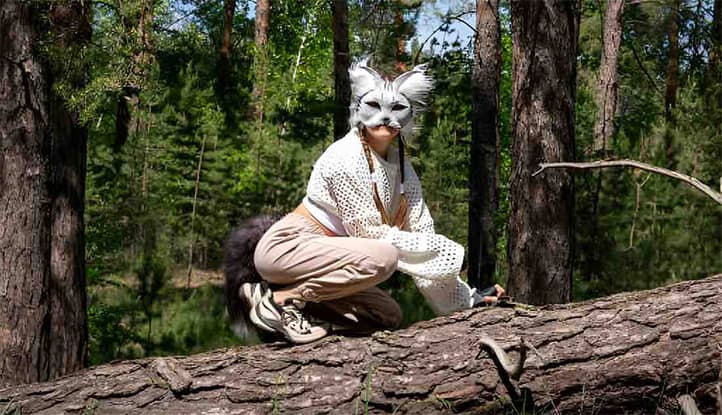Quadrobics is a modern youth activity that combines elements of physical exercise and role-playing animal behaviors. The main aspect of quadrobics is moving on all fours, like animals, while imitating their habits. Participants in this movement, known as “quadrobers,” often use animal masks as part of their gear and strive to replicate animal behavior as closely as possible. Quadrobics can be seen as a form of self-expression and a means of identity exploration, as well as a sport, though it sometimes raises concerns among parents and specialists.
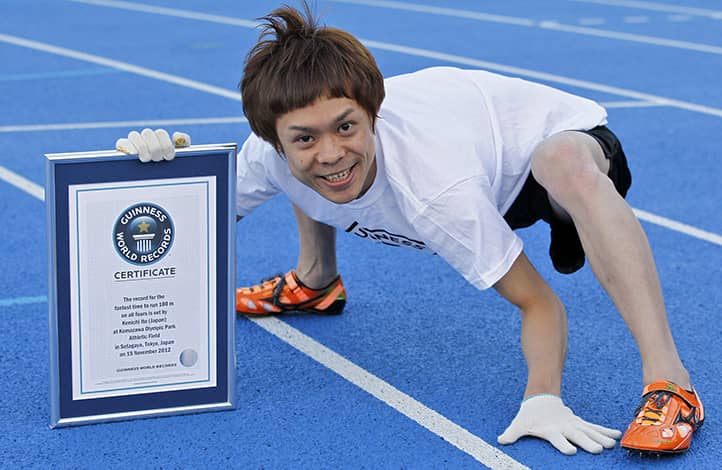
The Origins of Quadrobics
The history of quadrobics is closely linked to Kenichi Ito, a Japanese sprinter considered the founder of this unique movement. His interest in this activity began in childhood when his peers nicknamed him “monkey” due to his distinctive appearance. Instead of being offended, Ito decided to turn this nickname into his advantage.
Inspired by the movements of monkeys, he developed his own method of moving on all fours, experimenting with it despite not always being understood by those around him. There is a well-known incident where Tokyo police detained Ito, mistaking him for a mentally unstable person, and placed him in isolation for several days.
This incident did not stop Ito; on the contrary, it motivated him to further develop his idea. “I went to the mountains for about a month to set up a sort of four-legged training camp. But on the first day, a hunter mistook me for a wild boar and tried to shoot me,” Ito recounted about his experience.
Development and Spread of Quadrobics
A turning point in the history of quadrobics came in 2008 when Kenichi Ito managed to “legitimize” his passion. Representatives of the Guinness World Records recorded a world record – Ito covered a distance of 100 meters on all fours in 18.58 seconds. This record not only brought him fame but also drew attention to this new form of physical activity.
After setting the record, interest in quadrobics began to grow. Initially, other Japanese enthusiasts tried to challenge Ito by attempting to break his record. Then the trend started to spread beyond Japan. In the following years, quadrobics gained popularity in many countries worldwide.
The development of social media and video-sharing platforms played a significant role in popularizing quadrobics. Videos demonstrating the techniques and tricks of quadrobeas went viral, capturing the attention of young people globally.
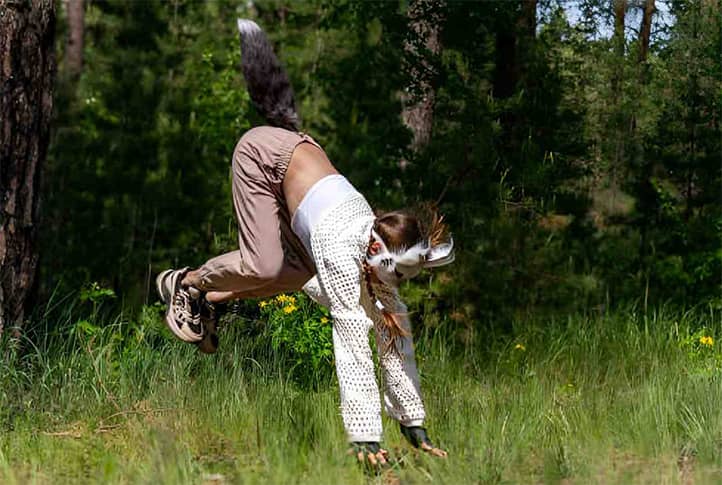
Quadrobics as Physical Activity
For millennia, humans have invented new forms of physical activity, from martial arts to extreme sports. In this context, quadrobics is a unique phenomenon that reconnects us with our evolutionary roots.
Moving on all fours is not just an imitation of animals but also a complex biomechanical process. It engages muscle groups that are rarely used in everyday life and requires a rethinking of our relationship with our bodies and their capabilities.
It is interesting to note that quadrobics has some parallels with rehabilitation practices. For example, some treatment methods for cerebral palsy in children use exercises resembling quadrober movements to improve coordination and strengthen muscles.
Additionally, quadrobics can be seen as a form of functional training. Unlike isolated exercises in a gym, it requires the entire body to work together, which can be particularly beneficial for overall physical fitness and endurance.
Movement Techniques
The foundation of quadrobics lies in the technique of moving on all fours, mimicking animal movements. Quadrobers use their hands and feet for movement, which requires significant physical preparation and coordination.
There are several styles of movement in quadrobics:
- “Monkey Style” – The most common, based on Kenichi Ito’s technique. Characterized by quick, jump-like movements.
- “Bear Style” – A slower, more strength-based movement style, imitating a bear’s gait.
- “Cat Style” – Known for smooth and flexible movements, often used for performing acrobatic elements.
Potential Physical Benefits
As a form of physical activity, quadrobics can offer several potential benefits:
- Strength and Endurance Development: Moving on all fours requires significant effort and helps strengthen the entire body.
- Improved Coordination: The need for coordinated work between hands and feet enhances motor skills.
- Increased Flexibility: Many movements in quadrobics require good flexibility, contributing to overall flexibility development.
- Cardio Workout: Intensive movement on all fours can provide an effective cardiovascular workout.
Potential Risks and Expert Opinions
Despite its potential benefits, quadrobics is also associated with certain health risks:
- Joint Injuries: The unusual strain on wrists, elbows, and knees can lead to injuries.
- Spinal Issues: Prolonged time in a position unnatural for humans can cause posture problems and back pain.
- Infection Risks: Contact between hands and the ground increases the risk of contracting various infections.
Fitness trainer Roman Ignatyuk notes: “Workouts that include natural movements, including moving on all fours, have long been popular in the fitness industry. However, it is important to distinguish between professional methods and spontaneous imitation without considering anatomical features.”
Pediatric orthopedic specialist Natalia Sushko emphasizes: “We must remember that the human skeleton, with all its physiological curves and structural features, is designed for vertical load in an upright position. It is important to follow safety guidelines to achieve positive effects from physical exercise.”

Psychological Aspects of Quadrobics
The human psyche has always sought ways to transcend everyday experiences. From ancient shamanic rituals to modern mindfulness practices, people have strived to expand the boundaries of their perception. Quadrobics offers a unique psychological experience, allowing individuals to literally see the world from a new perspective.
The process of mastering quadrobics can be viewed as a form of overcoming psychological barriers. Choosing to move in a way that society may deem strange or inappropriate requires a certain level of courage and self-confidence. This can become a powerful tool for personal growth and self-acceptance.
Interestingly, quadrobics may have therapeutic potential. Some psychologists suggest that imitating animal movements can help in addressing psychological trauma and stress, allowing a person to temporarily “step out” of their human identity and associated problems.
Additionally, quadrobics can be seen as a form of body therapy. Changing the usual way of movement can lead to a shift in thinking patterns and emotional responses, opening up new possibilities for psychological work.
Motivation of Quadrobers
The motivation of those who practice quadrobics can be diverse:
- Seeking New Experiences: Quadrobics offers a unique physical experience different from traditional sports.
- Self-Expression: For many, quadrobics becomes a way to express their individuality and creativity.
- Escapism: Some participants see quadrobics as a way to “escape” from everyday reality by immersing themselves in an alternative identity.
- Socialization: Quadrobics allows people to find like-minded individuals and become part of a community.
Influence on Self-Identification
Quadrobics can have a significant impact on the self-identification of its practitioners. The process of imitating animals and immersing oneself in an alternative reality can lead to temporary or even long-term changes in self-perception.
For adolescents and young people, quadrobics can become a way to explore different aspects of their personality. This can be a valuable experience in the process of identity formation, but it’s important that the interest doesn’t cross the line of healthy practice.
Possible Psychological Benefits and Risks
Among the potential psychological benefits of quadrobics, the following can be highlighted:
- Increased Self-Confidence: Mastering new physical skills positively affects self-esteem.
- Stress Reduction: Physical activity and immersion in an alternative reality help combat stress.
- Creativity Development: Quadrobics stimulates creative thinking and imagination.
However, there are also potential psychological risks:
- Escape from Reality: Excessive interest in quadrobics may lead to social maladaptation.
- Difficulties with Self-Identification: Constant “transformations” into animals can hinder the formation of a stable identity.
- Social Stigmatization: Misunderstanding by society may cause psychological discomfort for practitioners.
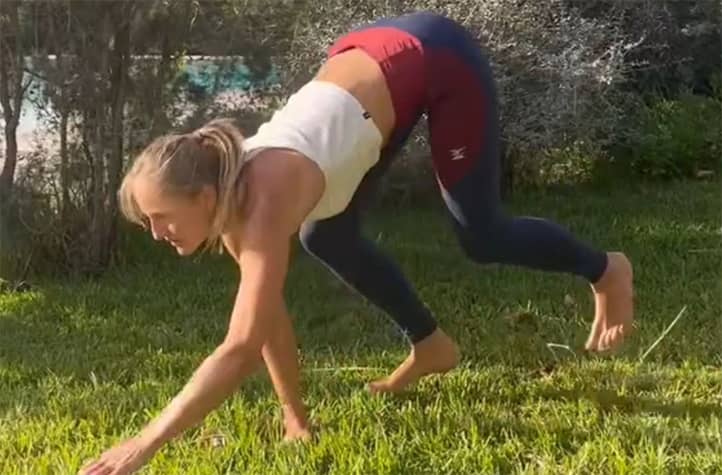
Quadrobers in the Context of Youth Subcultures
Youth subcultures often emerge as a response to the social and cultural challenges of their time. Quadrobics, which appeared in the era of global urbanization and digitalization, can be seen as a kind of “return to nature” in the context of the modern city.
It’s interesting to note that quadrobics has some parallels with ancient cultural practices. For example, in certain shamanic traditions, animal imitation was used as a way to gain mystical experiences and connect with natural forces. In this context, quadrobics can be considered a modern, secularized version of these practices.
Additionally, quadrobics represents a unique example of a subculture centered around physical practice. Unlike many other youth movements focused on music, fashion, or ideology, quadrobics emphasizes bodily experience.
It’s also important to note the role of social media in the spread of quadrobics. The visual nature of this practice makes it ideal material for short videos on TikTok or Instagram, contributing to its rapid spread and popularity among young people.
Comparison with Other Subcultures
Quadrobics has some similarities with other youth subcultures, particularly with Therians and Furries. However, there are significant differences:
- Therians: This subculture is based on identifying with animals on a spiritual or psychological level. Unlike quadrobers, Therians do not necessarily include physical imitation of animals in their practice.
- Furries: A subculture whose participants are interested in anthropomorphic animals in art, literature, and other fields. Furries often create their “fursonas” – animal characters – but do not necessarily physically imitate them.
Unique Features of Quadrobers
Quadrobers are differ from the aforementioned subcultures in the following ways:
- Focus on Physical Activity: While Therians and Furries primarily focus on psychological and creative aspects, quadrobers emphasize the physical embodiment of an animal’s image.
- Sporting Element: Quadrobics is often positioned as an alternative sport, with competitions and records.
- Temporary Nature: Unlike Therians and Furries, who may perceive their “animal” identity as a permanent part of themselves, quadrobers generally view their interest as a temporary activity.

Social Aspects of Quadrobics
Society’s reaction to new and unusual phenomena often reveals more about the society itself than about the phenomenon. Attitudes towards quadrobics can serve as a kind of indicator of social openness and tolerance towards non-standard forms of self-expression.
It’s interesting to examine quadrobics in the context of social constructivism theory. According to this theory, our understanding of normal and deviant behavior is constructed by society. Quadrobics challenges established notions of the “normal” way of moving, forcing society to rethink these categories.
Moreover, quadrobics raises important questions about the boundaries of public and private space. When quadrobers moves through a city, they transform public space into a kind of stage for performance, which can provoke various reactions from others.
It’s also worth noting the potential impact of quadrobics on urban planning and the design of public spaces. If this movement continues to develop, we might see the emergence of special zones or parks adapted for the practice of quadrobics.
Society’s Reaction
Society’s reaction to quadrobics is quite mixed:
- Curiosity and Interest: Many people are intrigued by this unusual phenomenon, especially when they encounter it for the first time.
- Misunderstanding and Condemnation: Some segments of society view quadrobers negatively, considering them strange or even dangerous.
- Concern: Parents and educators often express concern about the impact of quadrobics on the mental and physical health of youth.
Problems of Interaction of Quadrobers with Others
Quadrobers face several challenges when interacting with society:
- Misunderstanding: Many people do not understand the motivation of quadrobers, which often leads to conflicts.
- Fear: The unexpected appearance of a person moving on all fours and wearing an animal mask can frighten passersby, especially children and the elderly.
- Legal Issues: In some cases, the actions of quadrobers may be perceived as a breach of public order.
Attitude of Parents and Educators
The attitude of parents and educators towards quadrobers varies:
- Concern: Many adults express concern about the influence of quadrobics on the development and socialization of youth.
- Attempts to Understand: Some parents and educators try to understand the phenomenon of quadrobics to better comprehend the interests of the younger generation.
- Support: There are also those who support the interest in quadrobics, viewing it as a form of self-expression and physical activity.
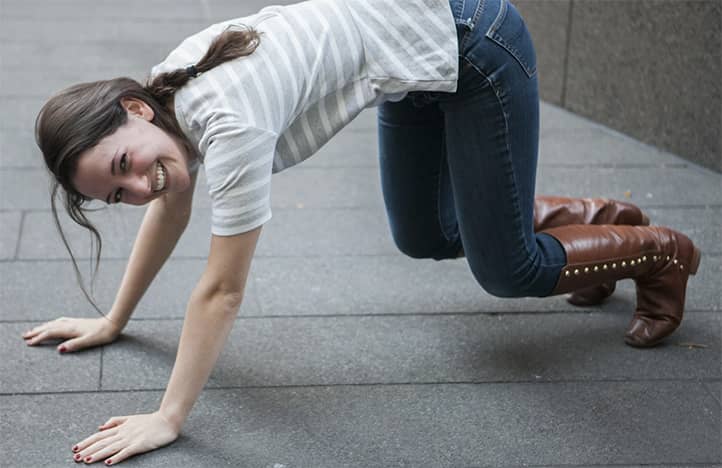
Legal Aspects
The emergence of new forms of social activity always poses new challenges for legislation. Quadrobics, situated at the intersection of sports, art, and social experimentation, creates intriguing legal precedents and compels a reevaluation of existing norms.
It is interesting to discuss quadrobics in the context of the right to freedom of expression. Can moving on all fours be considered a form of expression protected by constitutional rights? This question could become the subject of fascinating legal debates.
Additionally, quadrobics raises questions about the boundaries of public order laws. Where is the line between unusual but harmless behavior and actions that create inconvenience for others? The answer to this question may vary across different jurisdictions.
It is also essential to note the potential legal aspects of organizing quadrobics competitions. If this movement continues to develop in a sports-oriented direction, there will be a need to establish specific safety rules and clarify the responsibility of organizers.
Legal Status of Quadrobics
Currently, quadrobics does not have an official legal status as a sport or organized activity. This creates certain difficulties for both the quadrobers themselves and the authorities who encounter this phenomenon.
- Lack of Regulation: Since quadrobics is not recognized as an official sport, there are no specific norms and rules governing this activity.
- Application of General Norms: In most cases, general legal norms related to behavior in public places and maintaining public order are applied to quadrobics.
- Liability Issues: The unclear legal status creates difficulties in determining liability in cases of injuries or conflicts related to quadrobics.
Potential Legal Issues
Quadrobers may face various legal challenges:
- Public Order Violations: The actions of quadrobers may be interpreted as a violation of public order, especially if they cause concern among others.
- Safety Concerns: Moving on all fours in public spaces can create dangerous situations for both the quadrobers and those around them, which could lead to legal consequences.
- Use of Masks: In some countries, there are restrictions on wearing masks in public places, which may pose problems for quadrobers using animal masks.
Legal Solutions and Recommendations
To minimize legal risks, the following solutions can be suggested:
- Rule Development: Quadrober communities are encouraged to develop internal rules of conduct that take legal norms and public interests into account.
- Interaction with Authorities: It is crucial to establish a dialogue with local authorities to explain the essence of quadrobics and prevent potential conflicts.
- Public Awareness: Conducting informational campaigns will help improve understanding of quadrobics in society and reduce the risk of conflicts.
- Insurance: Quadrobers are advised to consider accident insurance and third-party liability insurance.
Lawyer Alla Munko notes, “Quadrobics in itself does not conflict with the law as long as quadrobers maintain public order. However, in the event of conflicts, responsibility may fall on either the parents of the child or the teenager themselves if they are over 16 years old.”

Quadrobics in Post-Soviet Countries
Quadrobics has gained popularity in various post-Soviet countries, but the degree of its popularity and the specifics of its practice vary:
- Russia: Quadrobics has seen the most widespread adoption among CIS countries. Major cities, especially Moscow and St. Petersburg, have become hubs for the development of this movement.
- Ukraine: In Ukraine, quadrobics is also gaining popularity, particularly among youth in major cities. Here, the movement often combines elements of parkour and freerunning.
- Kazakhstan: In Kazakhstan, quadrobics is less common but is beginning to attract the attention of young people, especially in Almaty and Nur-Sultan.
- Belarus: In Belarus, quadrobics is in the early stages of development, but groups of enthusiasts are already forming in Minsk and other major cities.
Characteristics of Quadrobics in the Post-Soviet Space
Quadrobics in CIS countries has several distinctive features:
- Adaptation to Urban Environments: Quadrobers in CIS countries often practice their hobby in urban settings, using architectural elements and park zones.
- Mixing with Other Subcultures: There is often a blending of quadrobics with elements of other youth subcultures, such as parkour, cosplay, and anime culture.
- Social Media: The spread of quadrobics in the post-Soviet space is largely due to social networks and video hosting platforms, where quadrobers share their achievements and techniques.
- Self-Organization: In the absence of official organizations, quadrobers in CIS countries often self-organize into informal groups and communities.
Public Discussion Around the Phenomenon in Different Countries
The attitude toward quadrobics in post-Soviet countries varies:
- Russia: This is where the most active discussion is observed. Some public figures and politicians express concern about the influence of quadrobics on youth, while others see it as a harmless hobby.
- Ukraine: In Ukrainian society, quadrobics is often seen as one of the manifestations of youth culture, although it causes some concern among the older generation.
- Kazakhstan: In Kazakhstan, quadrobics has not yet caused widespread public resonance but is beginning to attract the attention of the media and experts.
- Belarus: In Belarusian society, quadrobics is often viewed with caution, especially by the older generation and authorities.
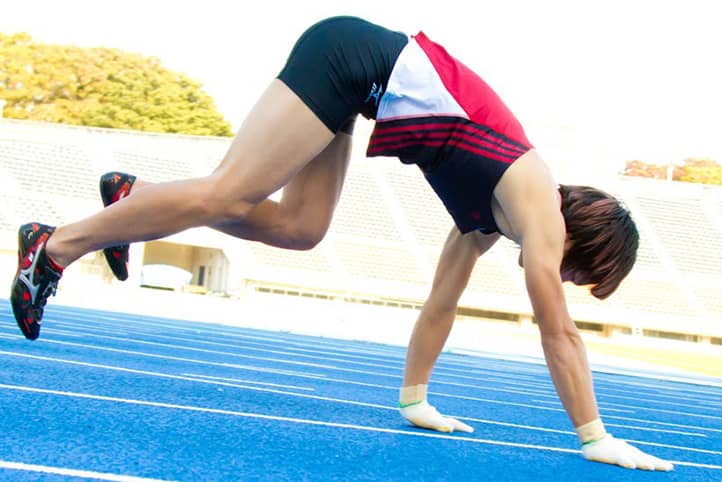
The Future of Quadrobics
The future of quadrobics largely depends on several factors:
- Institutionalization: The possible creation of official organizations and associations of quadrobers, which could lead to a more structured movement.
- Sports Recognition: There is a possibility that quadrobics will be recognized as an alternative sport, leading to the organization of official competitions.
- Educational Potential: Quadrobics could find application in educational and therapeutic programs, especially in working with children and teenagers.
- Technological Development: The introduction of new technologies, such as VR and AR, could open up new possibilities for the development of quadrobics.
Potential Changes and Adaptations
Quadrobics as a movement may undergo several changes:
- Safety: The likely development of safer practices and techniques, as well as the creation of special protective gear for quadrobers.
- Diversification: The possible emergence of new styles and directions in quadrobics, reflecting the cultural characteristics of different countries and regions.
- Integration with Other Disciplines: Quadrobics may integrate with other types of physical activity, creating new hybrid forms.
- Social Adaptation: As understanding and acceptance by society grow, quadrobics may become a more “mainstream” activity.
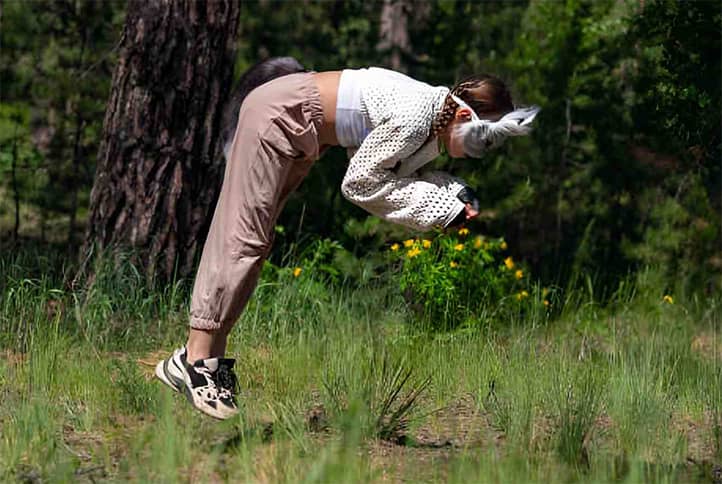
Conclusion
Quadrobics represents a unique phenomenon at the intersection of sports, art, and identity psychology. What began as a personal experiment by Kenichi Ito has quickly transformed into an international movement, attracting the attention of youth in many countries.
Despite society’s mixed reaction and the presence of some potential risks, quadrobics continues to develop and attract new followers. It offers a unique way of physical and psychological self-expression, which is especially important for young people seeking to explore their identity.
The future of quadrobics largely depends on how society and the quadrobers themselves can adapt to the challenges associated with this unusual hobby. We may witness the evolution of quadrobics into a recognized sport or therapeutic practice. Or it may remain a niche hobby, continuing to attract those who seek unconventional ways of self-expression.
Regardless of how quadrobics develops in the future, it has already become a vivid example of how a personal hobby can grow into an international movement, challenging established notions of sport, identity, and self-expression.
